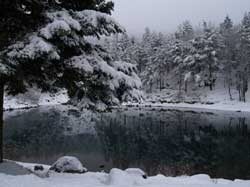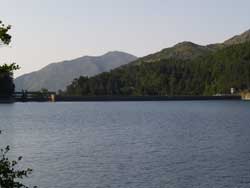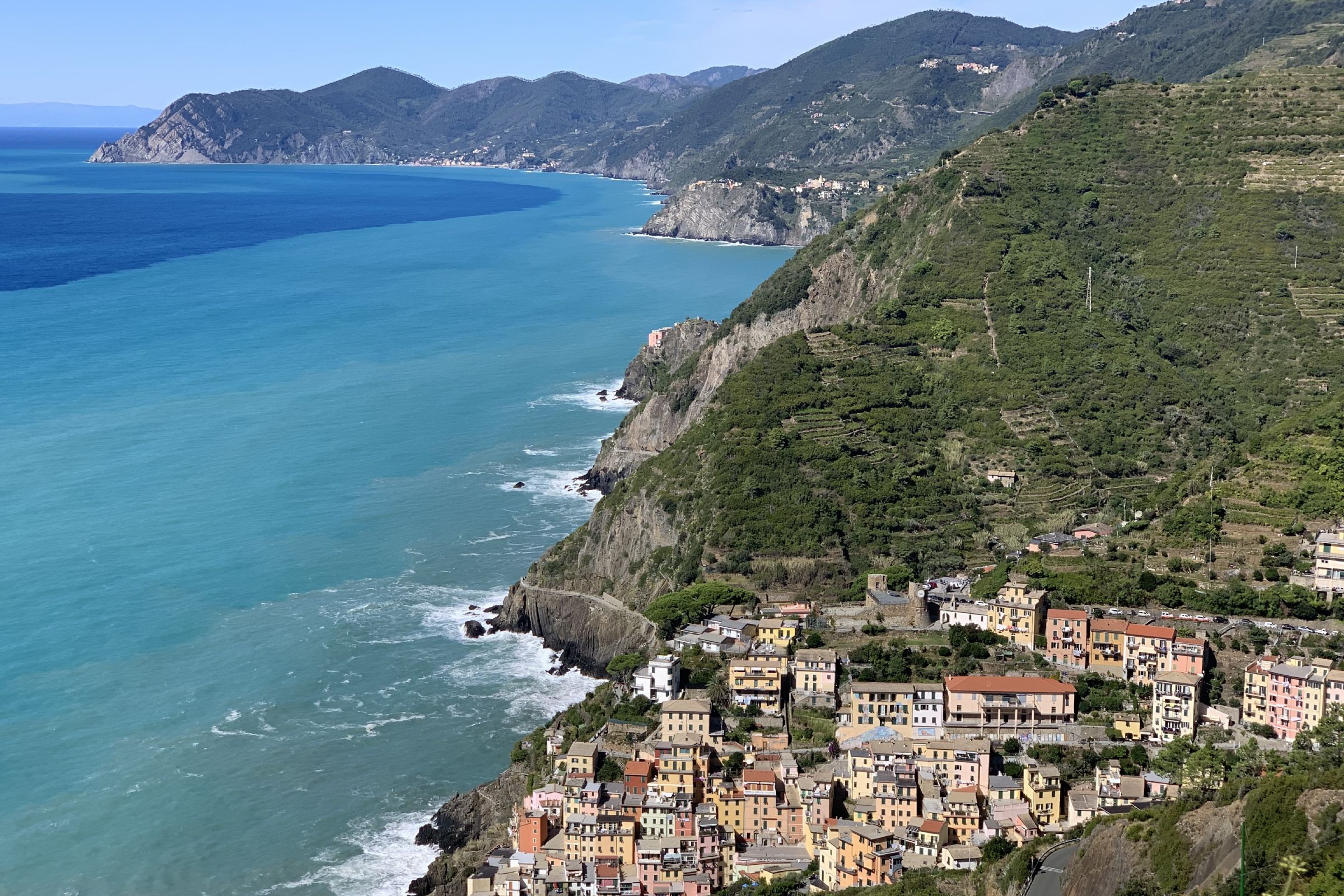Nature in Liguria, rivers, valleys and lakes
In Liguria, the wooded area is the largest of the Italian regions with 69%. However, human intervention has changed the environment, otherwise the hills up to 400 meters would be entirely covered with Mediterranean scrub and oak, as well as the alpine peaks would have spruce and larch trees with stony ground and lichens. The scrub has been reduced to make room for the maritime pine, the pine nut and the olive tree. The chestnut has also been important for the food and economy of these areas for centuries.
 Finally, to make the cultivation of vines and citrus fruits possible, man created the bands, built horizontally with respect to the vertical morphology of the region.
Finally, to make the cultivation of vines and citrus fruits possible, man created the bands, built horizontally with respect to the vertical morphology of the region.
The tourism of the nineteenth century, then, led to the introduction of new tropical and exotic botanical species that have acclimatized very well towards Sanremo and Ventimiglia and of which a typical example is palm trees. A contribution to this process of internationalization of the Ligurian flora is due to the parents of the writer Italo Calvino , important botanists in the twentieth century.
The vast forests of Liguria cover about 6,900 hectares of territory and are: to the east, the beech forests of Monte Gottero and Monte Zatta in the Val di Vara, in the Aveto Park the forests of Monte Penna and Lame ; above Arenzano, near the sea, there is the forest of Lerone and between Savona and the Bormida river, the Bosco di Savona . Then there are the protected areas such as the forests of Tiglieto, Deiva and Cadibona, in Val Bormida the beech forest of Melogno and the Barbottina forest, finally the fir of Gouta and the forests of Gerbonte and Monte Ceppo in the mountains of Triora.
The protected areas in Liguria are 11% of the region: there are the Cinque Terre National Park , under the aegis of Unesco , nine regional parks, four nature reserves, two marine reserves and six protected areas. The region has proposed as many as 125 sites of community importance and 7 special protection areas. They are not, however, areas that cannot be visited, on the contrary, the will is precisely to bring the tourist closer to nature with a more attentive and respectful eye.
The rivers of Liguria
In Liguria there are various watercourses but the longest rivers are at the borders of the region: to the west, the Roia , almost entirely French, of 58 km and to the east, the Magra of 62 km, almost entirely Tuscan. Then there is the Centa formed by the terminal stretch of four streams in the alluvial plain of Albenga and the Entella , also formed by the union of three streams that flow together.
The valleys
The valleys are almost entirely in the direction from north to south except the Arroscia Valley to the west and the Fontanabuona and Val di Vara valleys to the east, which descend parallel to the coast from west to east. The valleys of the Po side are wide in the south-north direction, except the Bormida valley which proceeds towards the southwest-northeast, crossed by streams that further form rivers such as the Tanaro and the Scrivia .
Lakes of Liguria
 There are artificial lakes in Liguria, created for hydroelectric purposes or as drinking water reserves. Near Imperia, in the upper Nervia valley, there is Lake Tenarda , Lake Osiglia is near Savona in the Bormida di Millesimo valley ; above Genoa, the Gorzente and Val di Noci lakes, in the Trebbia valley the Brugneto lake and finally above Chiavari, in the Sturla valley, the Giacopiane lake .
There are artificial lakes in Liguria, created for hydroelectric purposes or as drinking water reserves. Near Imperia, in the upper Nervia valley, there is Lake Tenarda , Lake Osiglia is near Savona in the Bormida di Millesimo valley ; above Genoa, the Gorzente and Val di Noci lakes, in the Trebbia valley the Brugneto lake and finally above Chiavari, in the Sturla valley, the Giacopiane lake .
The geology of Liguria
The Ligurian Alps present a considerable quantity of karst phenomena being generally limestone rocks and, in the deep prehistory, the first inhabited caves of the region were formed there. Near Savona from the limestones of the Finalese we pass to rocks of magmatic and metamorphic origin which are resolved in the Beigua massif and in the Voltri Group .
Between Genoa and Lavagna there are the limestones of Antola and the large slate banks of the Fontanabuona . The Apennines behind Sestri Levante were rich, from prehistoric times until recently, in manganese, copper and gold, and still today has many minerals of scientific interest. The hills between Levanto and La Spezia , then, give green and red marble and a black marble with golden and white veins called portoro and known since Roman times.
